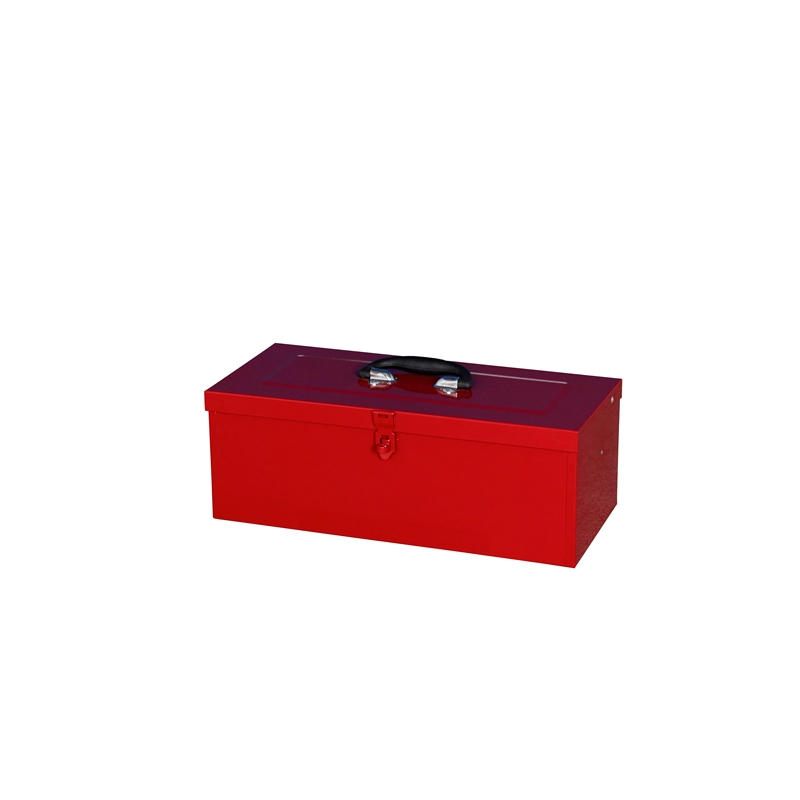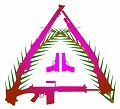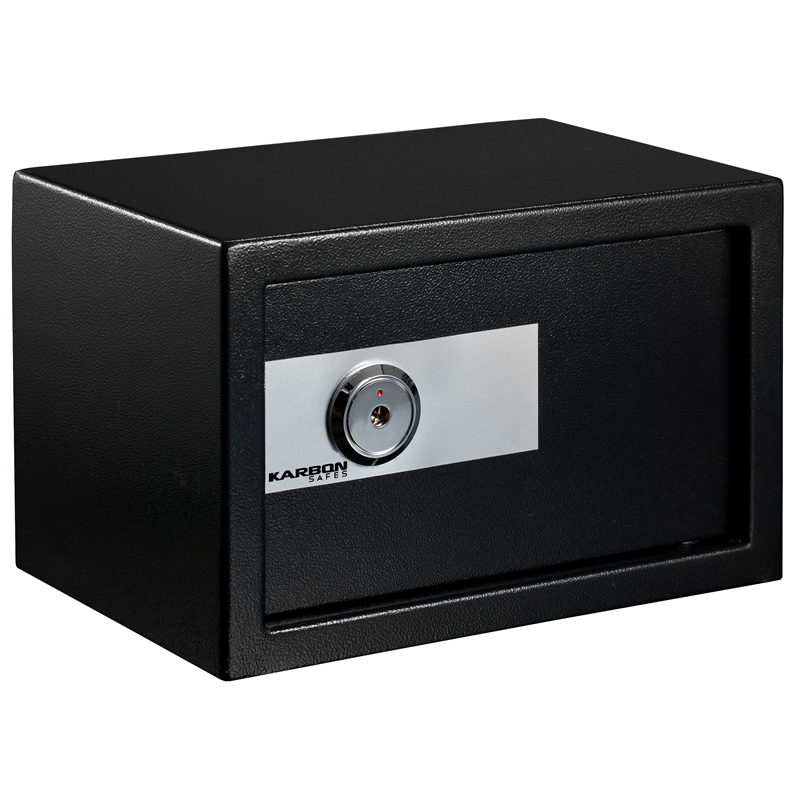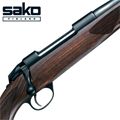Ammo Storage VIC
51 posts
• Page 1 of 2 • 1, 2
Ammo Storage VIC
Hey guys,
I know this topic has been drilled but I wanted to ask to see if anyone knows of any "updated info".
Anyway, my partner did her firearms safety course tonight and was told by the Firearms Officer that any ammo box (that's not part of the gun safe) needs to be non penetrable AND bolted down. Most of the topics I've read most people say they use lockable tool boxes (not bolted down).
All the Firearms Act says - "(3) Any cartridge ammunition for the firearm must be stored in a locked container separate from the receptacle in which the firearm must be stored.".. Seems pretty vague to me.
Has anyone else heard of any changes that have been made or will be made in the near future?
I know this topic has been drilled but I wanted to ask to see if anyone knows of any "updated info".
Anyway, my partner did her firearms safety course tonight and was told by the Firearms Officer that any ammo box (that's not part of the gun safe) needs to be non penetrable AND bolted down. Most of the topics I've read most people say they use lockable tool boxes (not bolted down).
All the Firearms Act says - "(3) Any cartridge ammunition for the firearm must be stored in a locked container separate from the receptacle in which the firearm must be stored.".. Seems pretty vague to me.
Has anyone else heard of any changes that have been made or will be made in the near future?
Ruger American 22LR
Howa 1500 Varmint Fluted 223
Webley & Scott 912 12G
Howa 1500 Varmint Fluted 223
Webley & Scott 912 12G
- cala90
- Private

- Posts: 52
- Victoria
Re: Ammo Storage VIC
Nope never heard or read a definitive answer yet, in text or by asking the local firearms officer directly.
I asked this specific question at the safety course also and was given a vague almost smart arse derr answer but when I asked for clarification for everyone's benefit and mentioned using a tool box or lock box type thing and asked does it have to be in or CAN it be in the safe or not.....
we were told "must be kept in a separate receptacle to firearms" that was it

So he wouldn't answer the question clearly with more than a recital from the vague requirement. I wanted to know what was required not this "different receptacle" crap.
Your partner didn't happen to do the course in Sale by any chance?
I asked this specific question at the safety course also and was given a vague almost smart arse derr answer but when I asked for clarification for everyone's benefit and mentioned using a tool box or lock box type thing and asked does it have to be in or CAN it be in the safe or not.....
we were told "must be kept in a separate receptacle to firearms" that was it


So he wouldn't answer the question clearly with more than a recital from the vague requirement. I wanted to know what was required not this "different receptacle" crap.
Your partner didn't happen to do the course in Sale by any chance?
-

KWhorenet - Sergeant

- Posts: 679
- -
Re: Ammo Storage VIC
KWhorenet wrote:Nope never heard or read a definitive answer yet, in text or by asking the local firearms officer directly.
I asked this specific question at the safety course also and was given a vague almost smart arse derr answer but when I asked for clarification for everyone's benefit and mentioned using a tool box or lock box type thing and asked does it have to be in or CAN it be in the safe or not.....
we were told "must be kept in a separate receptacle to firearms" that was it

So he wouldn't answer the question clearly with more than a recital from the vague requirement. I wanted to know what was required not this "different receptacle" crap.
Your partner didn't happen to do the course in Sale by any chance?
Apparently they were given the same treatment during the course. Which is sad when people are trying to find out information to do the right thing. From what I've read a tool box/lock box can't be put in the gun safe.
The different receptacle crap is what's frustrating me. The act doesn't define what it has to be but the way the firearms officer was talking was it has to meet his standards.
Nah, she didn't do it in Sale.
Ruger American 22LR
Howa 1500 Varmint Fluted 223
Webley & Scott 912 12G
Howa 1500 Varmint Fluted 223
Webley & Scott 912 12G
- cala90
- Private

- Posts: 52
- Victoria
Re: Ammo Storage VIC
If your safe has a lockable compartment I was told THAT IS FINE.
....ammo in locked box also stored inside safe = ammo is separated from rifles by its own receptacle being the locked box.
Screw this I'm getting another smaller safe anyway for bits n bobs.
Agreed it was frustrating especially since I thought these courses were for any and all questions to be answered properly before sending a bunch of potential noobs out on the street so to speak left to decipher the rules that I doubt even allot of officers can 100% do for sure.
....ammo in locked box also stored inside safe = ammo is separated from rifles by its own receptacle being the locked box.
Screw this I'm getting another smaller safe anyway for bits n bobs.
Agreed it was frustrating especially since I thought these courses were for any and all questions to be answered properly before sending a bunch of potential noobs out on the street so to speak left to decipher the rules that I doubt even allot of officers can 100% do for sure.
-

KWhorenet - Sergeant

- Posts: 679
- -
Re: Ammo Storage VIC
Yeah, that's exactly the problem. People are told different things so no one actually knows (I'm probably wrong, it's just what I've read).
I was considering buying another safe to use as ammo storage, putting them side by side. Reckon this would this be allowed?
Yeah that's exactly right. Makes it extremely hard to do the right thing. I'm gonna go see my local firearms officer today and see what he says. At the end of the day he's the one that has to be happy come inspection time..
I was considering buying another safe to use as ammo storage, putting them side by side. Reckon this would this be allowed?
Yeah that's exactly right. Makes it extremely hard to do the right thing. I'm gonna go see my local firearms officer today and see what he says. At the end of the day he's the one that has to be happy come inspection time..
Ruger American 22LR
Howa 1500 Varmint Fluted 223
Webley & Scott 912 12G
Howa 1500 Varmint Fluted 223
Webley & Scott 912 12G
- cala90
- Private

- Posts: 52
- Victoria
Re: Ammo Storage VIC
Ended up going to see the local firearms officer today. He actually didn't seem too fussed about what ammo was stored in as long as it had a sturdy lock. I told him my ammo is in a galvanised tool box about 1100mm long.. His response was "that sounds better than my ammo box!". He thinks the idea of a tool box is a good idea.
Doesn't need to be bolted down either.
Doesn't need to be bolted down either.
Ruger American 22LR
Howa 1500 Varmint Fluted 223
Webley & Scott 912 12G
Howa 1500 Varmint Fluted 223
Webley & Scott 912 12G
- cala90
- Private

- Posts: 52
- Victoria
Re: Ammo Storage VIC
cala90 wrote:Ended up going to see the local firearms officer today. He actually didn't seem too fussed about what ammo was stored in as long as it had a sturdy lock. I told him my ammo is in a galvanised tool box about 1100mm long.. His response was "that sounds better than my ammo box!". He thinks the idea of a tool box is a good idea.
Doesn't need to be bolted down either.
Well at least you know the firearms instructor bloke is a tool with no idea.

-

bigfellascott - Lieutenant General

- Posts: 5289
- -
Re: Ammo Storage VIC
Why's that mate? As he said the Firearms Act doesn't specify what the locked container has to be..
Ruger American 22LR
Howa 1500 Varmint Fluted 223
Webley & Scott 912 12G
Howa 1500 Varmint Fluted 223
Webley & Scott 912 12G
- cala90
- Private

- Posts: 52
- Victoria
Re: Ammo Storage VIC
cala90 wrote:Why's that mate? As he said the Firearms Act doesn't specify what the locked container has to be..
the Firearms Officer that any ammo box (that's not part of the gun safe) needs to be non penetrable AND bolted down.
-

bigfellascott - Lieutenant General

- Posts: 5289
- -
Re: Ammo Storage VIC
Just had a thought....What may be useful for powder, primers and ammo that and will keep a steady cool temperature could be an old dead bar fridge with decent DIY lock set up on it. The metal is as thick as a tool box and insulated.
-

KWhorenet - Sergeant

- Posts: 679
- -
Re: Ammo Storage VIC
"Any cartridge ammunition for the firearm must be stored in a locked container separate from the receptacle in which the firearm must be stored."
just need to 'lock' the ammo.....in a container, can be one of these;

Can even be one of these;

As long as its a container... and it's locked.
The police however, have taken the separate part to mean different key; if you have a standard safe with top ammo compartment, then it MUST have a different key... else it is somehow not separate
I like these bunnings specials;

They're sturdy and fit at least a couple of hundred centrefire rounds, a brick of 22fodder yet only cost $17
just need to 'lock' the ammo.....in a container, can be one of these;
Can even be one of these;

As long as its a container... and it's locked.
The police however, have taken the separate part to mean different key; if you have a standard safe with top ammo compartment, then it MUST have a different key... else it is somehow not separate
I like these bunnings specials;
They're sturdy and fit at least a couple of hundred centrefire rounds, a brick of 22fodder yet only cost $17
-

1290 - Warrant Officer C1

- Posts: 1336
- Victoria
Re: Ammo Storage VIC
bigfellascott wrote:cala90 wrote:Why's that mate? As he said the Firearms Act doesn't specify what the locked container has to be..
the Firearms Officer that any ammo box (that's not part of the gun safe) needs to be non penetrable AND bolted down.
Oh yeah, we came to the conclusion that he was just trying to drill it into the newbies at the safety course. "Do the right thing!"
Ruger American 22LR
Howa 1500 Varmint Fluted 223
Webley & Scott 912 12G
Howa 1500 Varmint Fluted 223
Webley & Scott 912 12G
- cala90
- Private

- Posts: 52
- Victoria
Re: Ammo Storage VIC
1290,
Yeah, I've got a galvanised tool box for storing ammo so I'm not too worried about it anymore. I've also got a similar to the bunnings special you mentioned for transporting ammo! So all good
Yeah, I've got a galvanised tool box for storing ammo so I'm not too worried about it anymore. I've also got a similar to the bunnings special you mentioned for transporting ammo! So all good

Ruger American 22LR
Howa 1500 Varmint Fluted 223
Webley & Scott 912 12G
Howa 1500 Varmint Fluted 223
Webley & Scott 912 12G
- cala90
- Private

- Posts: 52
- Victoria
Re: Ammo Storage VIC
I have a large MTM style ammo box with all of my spare ammo and use two sturdy padlocks.
CZ452 22lr | Remington 5R Milspec in .223 | Tikka Hunter in 300wsm | Ruger Scout in .308
-

handofcod - Lance Corporal

- Posts: 185
- Victoria
Re: Ammo Storage VIC
KWhorenet wrote:Just had a thought....What may be useful for powder, primers and ammo that and will keep a steady cool temperature could be an old dead bar fridge with decent DIY lock set up on it. The metal is as thick as a tool box and insulated.
Yeah old fridges are good for that sort of thing,
-

bigfellascott - Lieutenant General

- Posts: 5289
- -
Re: Ammo Storage VIC
Yep, I use the red tool box for travel with a pad lock, or if just say 5 to 10 rounds in the locked glove box. Tool box Should be ok for storage at home too.
The greatest invention in the history of man is beer.
https://youtu.be/2v3QrUvYj-Y
SSAA, the powerful gun lobby.

 Now I'm a member.
Now I'm a member. 
Hunt safe. A bit more bang is better.
https://youtu.be/2v3QrUvYj-Y
SSAA, the powerful gun lobby.

Hunt safe. A bit more bang is better.
-

Oldbloke - Field Marshal

- Posts: 13399
- Victoria
Re: Ammo Storage VIC
bigfellascott wrote:KWhorenet wrote:Just had a thought....What may be useful for powder, primers and ammo that and will keep a steady cool temperature could be an old dead bar fridge with decent DIY lock set up on it. The metal is as thick as a tool box and insulated.
Yeah old fridges are good for that sort of thing,
Not in Vic..... we're not allowed to store powder in steel... (fridges etc)
-

1290 - Warrant Officer C1

- Posts: 1336
- Victoria
Re: Ammo Storage VIC
I use one of these just for ammo, fits around 4,000 22LR in federal bulk, 8 X 525 bricks.
http://www.bunnings.com.au/safe-key-loc ... 0_p4210692

http://www.bunnings.com.au/safe-key-loc ... 0_p4210692

-

Guliver - Corporal

- Posts: 313
- Victoria
Re: Ammo Storage VIC
"Not in Vic..... we're not allowed to store powder in steel... (fridges etc)" mmmmmm thought that was only for the larger manifest quantities where they stipulate wood?
I havent looked at the DG regs tonight
I havent looked at the DG regs tonight
The greatest invention in the history of man is beer.
https://youtu.be/2v3QrUvYj-Y
SSAA, the powerful gun lobby.

 Now I'm a member.
Now I'm a member. 
Hunt safe. A bit more bang is better.
https://youtu.be/2v3QrUvYj-Y
SSAA, the powerful gun lobby.

Hunt safe. A bit more bang is better.
-

Oldbloke - Field Marshal

- Posts: 13399
- Victoria
Re: Ammo Storage VIC
cala90 wrote:Anyway, my partner did her firearms safety course tonight and was told by the Firearms Officer that any ammo box (that's not part of the gun safe) needs to be non penetrable AND bolted down. Most of the topics I've read most people say they use lockable tool boxes (not bolted down).
All the Firearms Act says - "(3) Any cartridge ammunition for the firearm must be stored in a locked container separate from the receptacle in which the firearm must be stored.".. Seems pretty vague to me.
I've read relevant bits of the Act, spoken with dealers and Police on multiple occasions and never heard or read anywhere official an ammo box needed to be bolted down.
Locked, yes. Not easily penetrable, yes.
Ultimately some guys word is worthless, legally. I'd take the written word of the Firearms Act, that's what we're judged by.
-

VICHunter - Sergeant

- Posts: 623
- Victoria
Re: Ammo Storage VIC
Wasn't trying to sell you a second hand ammo safe too was he? 
-

Yelp - Lance Corporal

- Posts: 223
- Queensland
Re: Ammo Storage VIC
Storing ammo as long as it's in a locked box and the key is different to the safe all is good. Transporting ammo the same locked tool box, all I use is an old ADI ammo box fixed with a pad lock.
The interesting part to all this and even spoke to 3 different DFO's is storing powder and primers. So far I and they have not found anything writen that it cannot be stored in the gun safe. They asked why and I told them the my gun safe is climate controlled thus a better area to store powder and primers as they are not subjected to extreme temp, humidty variations.
They understood but went on to say that the local police may not understand and may take a different view on it.
DFO even went on to say that empty brass is classed as ammo and needs to be locked away. Which I said a crim isn't going to sit down reload ammo. As 99.9% would have no idea on how too and 1 simple mistake could mean the end.
I remember when I got my licence all the law said was a safe out of steel or hardwood and not easily penetrable. I said to the instructor while laughing so I can make a safe out of balsa wood ( technically its a hard wood ). Then I said not easy penetrable to whom as one would say thats to hard to get in while another person might say get into that piss easy. All I got was blank looks.
The interesting part to all this and even spoke to 3 different DFO's is storing powder and primers. So far I and they have not found anything writen that it cannot be stored in the gun safe. They asked why and I told them the my gun safe is climate controlled thus a better area to store powder and primers as they are not subjected to extreme temp, humidty variations.
They understood but went on to say that the local police may not understand and may take a different view on it.
DFO even went on to say that empty brass is classed as ammo and needs to be locked away. Which I said a crim isn't going to sit down reload ammo. As 99.9% would have no idea on how too and 1 simple mistake could mean the end.
I remember when I got my licence all the law said was a safe out of steel or hardwood and not easily penetrable. I said to the instructor while laughing so I can make a safe out of balsa wood ( technically its a hard wood ). Then I said not easy penetrable to whom as one would say thats to hard to get in while another person might say get into that piss easy. All I got was blank looks.
- Varmtr
- Lance Corporal

- Posts: 195
- Victoria
Re: Ammo Storage VIC
Varmtr wrote:Storing ammo as long as it's in a locked box and the key is different to the safe all is good. Transporting ammo the same locked tool box, all I use is an old ADI ammo box fixed with a pad lock.
The interesting part to all this and even spoke to 3 different DFO's is storing powder and primers. So far I and they have not found anything writen that it cannot be stored in the gun safe. They asked why and I told them the my gun safe is climate controlled thus a better area to store powder and primers as they are not subjected to extreme temp, humidty variations.
They understood but went on to say that the local police may not understand and may take a different view on it.
DFO even went on to say that empty brass is classed as ammo and needs to be locked away. Which I said a crim isn't going to sit down reload ammo. As 99.9% would have no idea on how too and 1 simple mistake could mean the end.
I remember when I got my licence all the law said was a safe out of steel or hardwood and not easily penetrable. I said to the instructor while laughing so I can make a safe out of balsa wood ( technically its a hard wood ). Then I said not easy penetrable to whom as one would say thats to hard to get in while another person might say get into that piss easy. All I got was blank looks.
Interesting and thanks for doing some leg work.
Funny opinion they gave about the brass... considering you don't even need a licence to buy it.
-

KWhorenet - Sergeant

- Posts: 679
- -
Re: Ammo Storage VIC
Bentaz, the red coloured steel bunnings toolbox is the most convenient, top handle lets you pick it up and easily transport locked out to the hunt or range  but more than necessary by the requirements of the law;
but more than necessary by the requirements of the law;
Firearm Act 1996 - SCHEDULE 4 - STORAGE REQUIREMENTS
1 Longarm licences for category A and B longarms
.....
3 Any cartridge ammunition for the firearm must be stored in a locked container separate from the receptacle in which the firearm must be stored.[/i]
Thats it so a plastic 100round ammo case with padlock tabs or similar would comply....even if you storage the case on an open shelf...
so a plastic 100round ammo case with padlock tabs or similar would comply....even if you storage the case on an open shelf...
Varmtr, its called dis-info, either from ignorance or just deceptive behavior / advice....and its really not acceptable from the law-enforcers...it means you CAN NOT rely on their word
Vic Firearms act defines most term used in firearm law including AMMUNITION.....;
From the FA ACT, definitions, always at the start of the text;
cartridge ammunition means ammunition having a bullet or other projectile and a priming device fixed to or enclosed in a cartridge case which is composed wholly or partly of material other than paper;
So if it can not go bang with a bullet IT IS NOT AMMO (I understand in NSW, probably a couple of other ass-backward states, empties ARE classified ammunition )
)
Yes, firearm storage is with a not easily penetrable hardwood or steel receptacle, but I personally consider the storage is more to protect YOUR property than pass an inspection... SO if its really secure and made of HW, and you're happy storing YOUR property in it, then go for it!
POWDER may NOT be stored in steel, thats the DG law, enforced by Worksafe and not the police,
Dangerous Goods (Explosives) Regulations 2011(VIC);
69 Explosives not to be stored in safes or refrigerators A person who stores any explosives, except explosives of Classification Code 1.4S, must not store the explosives in a document safe, money safe or refrigerator.
70 Storage of Hazard Division 1.1, 1.2, 1.3 (propellant is 1.3C), 1.5 or 1.6 explosives
(1) A person who stores explosives of Hazard Division 1.1, 1.2, 1.3, 1.5 or 1.6 must—
(a) store the explosives in—
(i) a receptacle that complies with regulation 73; and
(ii) a building that complies with regulation 63(1)(b); and
(b) ensure that—
(i) explosives of more than one Compatibility Group are not stored in the same receptacle; and
(ii) detonators, capped fuses and other explosives of Classification Code 1.1B are not stored in the same receptacle as any other type of explosive.
73 Requirements for construction of receptacles A receptacle used for the storage of explosives must be constructed and maintained as follows—
(a) the construction of the receptacle must be sturdy; and
(b) the receptacle must have a close fitting closure; and
(c) the inner construction of the receptacle must—
(i) be made from, or be lined with, plywood or close joined timber or another suitable non-sparking material;
and
(ii) not include exposed iron or steel.
To reiterate, storage of propellant (and primers) is covered by the Dangerous Good (explosives) laws not the Firearms Act....
 but more than necessary by the requirements of the law;
but more than necessary by the requirements of the law; Firearm Act 1996 - SCHEDULE 4 - STORAGE REQUIREMENTS
1 Longarm licences for category A and B longarms
.....
3 Any cartridge ammunition for the firearm must be stored in a locked container separate from the receptacle in which the firearm must be stored.[/i]
Thats it
 so a plastic 100round ammo case with padlock tabs or similar would comply....even if you storage the case on an open shelf...
so a plastic 100round ammo case with padlock tabs or similar would comply....even if you storage the case on an open shelf...Varmtr, its called dis-info, either from ignorance or just deceptive behavior / advice....and its really not acceptable from the law-enforcers...it means you CAN NOT rely on their word
Vic Firearms act defines most term used in firearm law including AMMUNITION.....;
From the FA ACT, definitions, always at the start of the text;
cartridge ammunition means ammunition having a bullet or other projectile and a priming device fixed to or enclosed in a cartridge case which is composed wholly or partly of material other than paper;
So if it can not go bang with a bullet IT IS NOT AMMO (I understand in NSW, probably a couple of other ass-backward states, empties ARE classified ammunition
 )
)Yes, firearm storage is with a not easily penetrable hardwood or steel receptacle, but I personally consider the storage is more to protect YOUR property than pass an inspection... SO if its really secure and made of HW, and you're happy storing YOUR property in it, then go for it!
POWDER may NOT be stored in steel, thats the DG law, enforced by Worksafe and not the police,
Dangerous Goods (Explosives) Regulations 2011(VIC);
69 Explosives not to be stored in safes or refrigerators A person who stores any explosives, except explosives of Classification Code 1.4S, must not store the explosives in a document safe, money safe or refrigerator.
70 Storage of Hazard Division 1.1, 1.2, 1.3 (propellant is 1.3C), 1.5 or 1.6 explosives
(1) A person who stores explosives of Hazard Division 1.1, 1.2, 1.3, 1.5 or 1.6 must—
(a) store the explosives in—
(i) a receptacle that complies with regulation 73; and
(ii) a building that complies with regulation 63(1)(b); and
(b) ensure that—
(i) explosives of more than one Compatibility Group are not stored in the same receptacle; and
(ii) detonators, capped fuses and other explosives of Classification Code 1.1B are not stored in the same receptacle as any other type of explosive.
73 Requirements for construction of receptacles A receptacle used for the storage of explosives must be constructed and maintained as follows—
(a) the construction of the receptacle must be sturdy; and
(b) the receptacle must have a close fitting closure; and
(c) the inner construction of the receptacle must—
(i) be made from, or be lined with, plywood or close joined timber or another suitable non-sparking material;
and
(ii) not include exposed iron or steel.
To reiterate, storage of propellant (and primers) is covered by the Dangerous Good (explosives) laws not the Firearms Act....
-

1290 - Warrant Officer C1

- Posts: 1336
- Victoria
Re: Ammo Storage VIC
Just thinking out loud here with a few thoughts/observations.
WorkSafe Victoria obviously covers workplaces, they're only interested in large quantities of propellant and how they're stored. They also have no mandate/right/access to shooter information or to inspect your powder storage.
At the same there must be 10's of thousands of shooters there in VIC using the internal ammo compartment of their gun safe as most come with one and they're all passing their inspections.
So is there law and then workplace law? Enforced by two different bodies, so the WorkSafe regs aren't really relevant there for personal shooters/reloaders?
WorkSafe Victoria obviously covers workplaces, they're only interested in large quantities of propellant and how they're stored. They also have no mandate/right/access to shooter information or to inspect your powder storage.
At the same there must be 10's of thousands of shooters there in VIC using the internal ammo compartment of their gun safe as most come with one and they're all passing their inspections.
So is there law and then workplace law? Enforced by two different bodies, so the WorkSafe regs aren't really relevant there for personal shooters/reloaders?
-

wheedle - Private

- Posts: 87
- Queensland
Re: Ammo Storage VIC
bentaz wrote:so what do you store your powder in?
Doing a layer of thin balsa wood on the floor of the ammo compartment seems to be the preferred option

Sako 85 Hunter
.308 Winchester
.308 Winchester
-

Seconds - Corporal

- Posts: 357
- New South Wales
Re: Ammo Storage VIC
bentaz wrote:so what do you store your powder in?
In original package, secured in accordance with the above DG regs....
-

1290 - Warrant Officer C1

- Posts: 1336
- Victoria
Re: Ammo Storage VIC
wheedle wrote:Just thinking out loud here with a few thoughts/observations.
WorkSafe Victoria obviously covers workplaces, they're only interested in large quantities of propellant and how they're stored. They also have no mandate/right/access to shooter information or to inspect your powder storage.
At the same there must be 10's of thousands of shooters there in VIC using the internal ammo compartment of their gun safe as most come with one and they're all passing their inspections.
So is there law and then workplace law? Enforced by two different bodies, so the WorkSafe regs aren't really relevant there for personal shooters/reloaders?
They're the delegated authority for the Dangerous Goods laws.... note the Police may be authorised as well...they can still enforce, but do not ordinarily bother themselves, as far as I'm aware with propellant unless, say theyre inspecting for another purpose and come across jugs of powder sitting in the open...... they will probably follow up.
We buy propellant under the DG not the Firearms act, any right of entry would be covered under the DG....Without opening the regs I would say they would have more rights including of entry, than you would imagine.
We are authorised under the DG law to buy explosives, not firearms act..., shooters are exempt from an additional explosives licence or permit on account of holding a licence under the Firearm Act....
-

1290 - Warrant Officer C1

- Posts: 1336
- Victoria
Re: Ammo Storage VIC
1290 wrote:They're the delegated authority for the Dangerous Goods laws.... note the Police may be authorised as well...they can still enforce, but do not ordinarily bother themselves, as far as I'm aware with propellant unless, say theyre inspecting for another purpose and come across jugs of powder sitting in the open...... they will probably follow up.
I'm sure that's right.
If you've taken reasonable precaution to secure it I'm sure that's all they're concerned about.
Tikka Stainless from 30-06 Springfield lane.
- Releb
- Lance Corporal

- Posts: 117
- Queensland
Re: Ammo Storage VIC
Worksafe have bigger fish to fry.
The greatest invention in the history of man is beer.
https://youtu.be/2v3QrUvYj-Y
SSAA, the powerful gun lobby.

 Now I'm a member.
Now I'm a member. 
Hunt safe. A bit more bang is better.
https://youtu.be/2v3QrUvYj-Y
SSAA, the powerful gun lobby.

Hunt safe. A bit more bang is better.
-

Oldbloke - Field Marshal

- Posts: 13399
- Victoria
51 posts
• Page 1 of 2 • 1, 2

